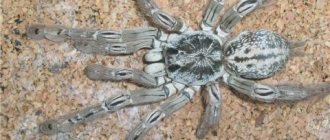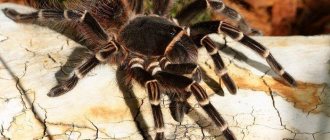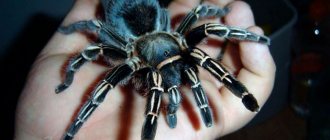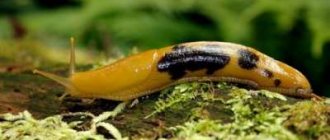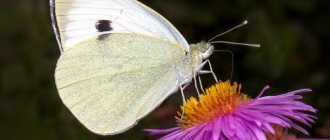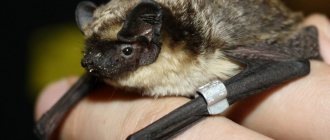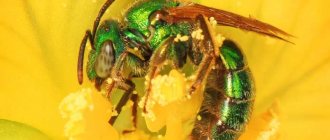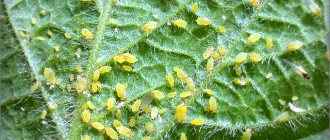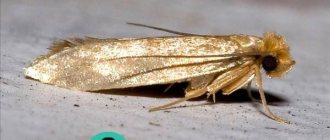How to get and where to get ants for a formicarium?
Reaper ants or steppe ants are one of the easiest species to keep for beginners. At the head of such a colony is a queen, which lays eggs and contributes to the growth of the family.
How to get and where to get ants for a formicarium:
- Buy a small colony, which is sold in small tubes. Typically this is a queen along with 10, 20 or 30 workers.
- If you are not ready to spend money on purchasing a colony, you can do the following. In nature, females and males mate in spring. These ants, unlike the usual ones, have wings. Later, after fertilization, the queen gnaws off her wings, descends underground, or climbs under a stone or dry tree. There the process of digging holes and laying eggs begins. During the mating period, it is necessary to get out into the steppe and look for similar insects with wings. Fertilization of the uterus occurs only once in a lifetime; it works with the accumulated sperm capacity, laying eggs. Some time after fertilization, the males die. Next, the queen begins laying eggs.
- As soon as you have a queen, you need to transplant it into a test tube with moistened cotton wool, and place there a small piece of walnut, the size of a match head, and a few dead mosquitoes. This is because ants in nature also eat dead insects to provide themselves with protein.
The most remarkable thing is that the whole family consists of females, males, and workers. Workers are females, but with underdeveloped reproductive organs that cannot produce offspring. They are the ones who do the cleaning, some are nannies, and feed the offspring. In such a family there are individuals who carry out cleaning, carry dead insects and debris to a designated place so as not to clog the formicarium or nest. It is worth noting that entomologists consider ants to be the most developed of all insects. It is believed that an anthill is a single whole organism, each of which has its own purpose and purpose. The work is distributed, everyone knows what to do. The queen lays eggs, other insects feed them, another caste cleans and protects the anthill from attack by other insects.
Murashka
Features of appearance and structure
Reapers have developed polymorphism. The colony is divided into classes:
- Uterus (15 mm);
- Worker ant (4-9 mm);
- Transitional form (10 mm);
- Soldier ant (11 mm).
The connection between the abdomen and the rest of the body is thin and seemingly fragile. There is evidence that the uterus died after falling from a small height. It doesn't sound plausible. There is a sting, but it is reduced. They don't use it.
There is a transitional form between the soldier and the working individual. They are formed due to a lack of protein for the development of full-fledged soldiers. They are already developing massive occipital muscles, which are responsible for the work of the lower jaws.
The species is not aggressive; the soldiers are essentially millers. With their huge jaws, the ants grind large seeds into flour, which is then mixed with saliva. Both ants and larvae feed on the mixture.
What to feed ants at home?
Of course, harvester ants can exist peacefully if they are fed with poppy and sunflower seeds, but in the presence of protein, the family develops much faster, and the individuals are larger in size.
What to feed ants at home:
- Don't be surprised if the first insects are small. This is understandable, since the queen spends her own energy feeding and raising them, which may not be enough. The next generation will be larger due to additional feeding.
- Add grains from time to time, and do not forget about dead insects. These could be small cockroaches, worms, or mosquitoes. This food can be found at any pet store or ordered online. Nowadays, keeping a formicarium is quite popular; finding food for ants should not be a problem.
- Buy food in special stores. Canary mixture is also suitable.
Ants
Reproduction
Living conditions even affected the breeding habits of reapers. Most ants raise sexually mature individuals by late spring or early summer. Reapers emerge in late summer, spend the winter in the nest, and begin breeding in April. This gives them the opportunity to build an anthill under favorable conditions, while the steppe soil is not dry and the ambient temperature is not yet so high.
Each harvester ant nest contains one queen. At the stage of nest formation there may be several of them, but then the ants expel or eat the extra ones. The males, having fertilized the female, die.
The harvester ant is an insect with a full development cycle: egg, larva, pupa, adult. The first three stages take up to 2-3 weeks each. Reaper ants are characterized by two methods of reproduction: asexual and sexual. Asexual is represented by parthenogenesis, it leads to the birth of worker ants. In the sexual method, males and females are born.
Reaper ants: maintenance and care at home
Your goal is to place the tube containing the queen bee in a dark place and check once a week. In about a month, the family will increase in size. On average, you will see about 30 new individuals in one month. Later, the insects will begin to develop much faster, because the queen will have assistants who will look after the new eggs, feed them and take out the trash.
Reaper ants, maintenance and care at home:
- To develop a colony, you need a cozy formicarium or farm with a large number of passages. Do not rush to open all the compartments at once, freeing them gradually as your family grows. This is necessary so that the ants do not get lost.
- Excessive space can cause death, severe stress, which will negatively affect the strength of the family. Ants need constant moisture. Despite the fact that reapers live in the steppes, where it is quite dry, they still choose places where moisture accumulates. Therefore, be sure to put cotton wool soaked in water into the chamber to maintain high humidity. Do not place the truss near a window, on a windowsill, or in places where there is a draft. Ants do not live well on the balcony. Choose a cozy, shady place where little insects will disturb you.
Goosebumps
How long does an ant live and what does it eat?
In principle, there are no lonely ants. And their life expectancy depends on the species, caste, and living conditions. Working individuals live 1-3 years. Small species live shorter than their large relatives.
Insects from cold regions live longer than those living in the tropics. This occurs due to hibernation, as insects remain motionless for a long time, which preserves their strength.
Male ants live for 1-2 weeks and after mating are destroyed by the anthill. And only the uterus is the longest-liver of the genus. But what do ants eat?
Depends on the type:
- Harvester ants consume the seeds of dried herbaceous plants to obtain energy. The food is quite hard and rough. But it produces a soft pulp. Soldier ants are engaged in grinding in their free time from guards. With their powerful mouthparts, they obtain complete food from dry organic matter.
The reaper's diet consists of 97% seeds. For the winter, they can make a supply of 1 kg of seeds. This carbohydrate food is enough for them throughout the cold period. They do not need protein food in winter, since there are no larvae in the colony.
- For carpenter ants, the source of carbohydrates is tree resin or gum, secreted in places where tree bark is damaged. But since gum is a fickle product, woodworms enter into a symbiotic relationship with aphids.
Ants also enter into symbiosis with some beetles, as well as their larvae. The honeydew they secrete gives them a chance to live next to ants, which sometimes allow the symbionts to feast on their own eggs. Running past such a neighbor, the ant touches him with its antennae and receives a portion of the sweet dessert.
Can ants live without a queen?
Despite the fact that harvester ants are the easiest to care for, significant problems can arise when introducing a new queen.
Can ants live without a queen?
- Yes, but there will be no new family members, and the inhabitants of the colony will simply live out the life that is intended for them. If you want the family to develop, a womb is a must.
- On average, the queen lives from 5 to 25 years, depending on the type and the quality of care for it. There are individuals that live up to 28 years.
Insect
Brief information
Name in Latin: Messor structor Difficulty: for beginners Size of individuals: M - workers from 4 to 9 mm, soldiers up to 11 mm, queen up to 12 mm Size of colonies: up to 5,000 individuals Habitat: steppes and semi-deserts, from Portugal to Kazakhstan, and south to Iran Temperature: 23-25 degrees, preferably warmed up Humidity: gradient, from 30% in the arena to 90% in the nest Diet: plant seeds, dead insects Wintering: not required
Reaper ants: the queen died, what should I do?
There are several ways to deal with the problem.
Reaper ants, the queen died, what to do:
- Plant a new queen. This works with any type of ant, but not with reaper ants. This species is the most problematic, since after the death of the queen, the workers even carry the old queen piece by piece and protect it in every possible way. They are aggressive towards new individuals. That is why it is impossible to simply take and pour the old colony into a new formicarium. Members of different families will simply kill each other, the strongest family will survive. The main problem is that new inhabitants of the old formicarium can kill the queen. Accordingly, two families will be left without a queen. You risk ruining two families instead of one.
- If you want the family to develop successfully, to add a new queen to the family that is left without a queen, you need to place the queen in the arena and cover all the holes in the incubator with a metal, steel mesh. Ants will not be able to harm the queen. Pay attention to how communication occurs. It is necessary that the antennae of the ants touch the uterus, they will get used to each other. If there is no aggression from the ants, you can open the exit from the incubator. Most likely, the workers will accept the queen. If open aggression is observed, then the queen must be taken away, because the soldiers will destroy it.
- There is another option for introducing a new queen into an old family. For these purposes, it is necessary to place the old formicarium, in which there is no queen, in the refrigerator. A decrease in temperature will help reduce the motor activity of the ants; they will go into suspended animation. It is necessary to take a completely new, clean, dry formicarium and place the uterus in the center of the arena. Next, you need to place the ants that have fallen into suspended animation into the arena one by one. Due to decreased motor activity and loss of orientation, the ants may not understand that this is not an old queen, but a new one, and will accept her into the family.
Ant
How to feed the reapers
Having taken care of a suitable farm for the reapers, you should address the issue of feeding these insects. The development and reproduction of ants depends on this factor. In their natural environment, reapers forage for food on their own. Well, on the ant farm the myrmikeepers should take care of this. The diet of these insects must include:
- grains and seeds;
- natural protein;
- sweets.
Grains and seeds are considered ideal food options for reapers. They are able to process this food into flour. Thus, the so-called “ant bread” is obtained, which will feed the entire colony: from the larvae to the queen.
It is recommended to use other insects as natural protein. Such food feeds the reapers with components that give them strength to work and reproduce.
Some people may not have known, but reapers have a sweet tooth. They will never refuse a portion of glucose. Sweet fruits are especially popular among this type of ant: pears, apples, pineapples and bananas. They also love a special sweet syrup, which contains all the necessary minerals and vitamins for growth and development.
Why do ants die in an ant farm?
Although ants are very easy to care for, there are a number of diseases that the insects are susceptible to.
Why do ants die in an ant farm:
- Poisoning
- Incorrectly selected diet
- Parasites and diseases
- Disturbance of the microclimate in the formicarium
- Queen Death and Molds
Most often, insects suffer from fungal diseases, as well as parasites. The main signs of infection are high insect mortality and strange behavior. Often such insects walk in circles or crawl, freezing in one place. Ants die in whole groups.
Ants
What do ants get sick with in a formicarium?
To save insects, it is necessary to relocate to another formicarium and disinfect the individuals. To prevent the disease from entering the new farm along with insects, it is necessary to place cotton wool moistened with Antibak 250 into the arena. A test tube is placed next to such cotton wool. As soon as 20 individuals get into it, they must be moved to a new place of residence. Most often, ants die due to microclimate disturbances. This is facilitated not by a decrease or increase in temperature, but by fluctuations in humidity.
What do ants suffer from in a formicarium?
- Ticks . They appear in the form of formations on the bodies of insects, similar to droplets. There may be several such drops on the ant's abdomen and head. To get rid of the parasite, it is necessary to reduce the temperature and humidity levels. Of course, this will have a negative impact on the ants, but the mite is more sensitive to such microclimate changes than the ants. Often, professionals use a predatory mite for these purposes, which destroys the parasite. However, this is also a dangerous parasite; only professionals resort to this method of control.
- Fly rider . For soldiers or breadwinners, she does not pose any danger by defeating the queen. Such a parasite lays a larva in its interior. After a while, the queen lays a large red-yellow cocoon. After a while the uterus dies. Take a closer look at the uterus, before laying the cocoon of the fly, it increases significantly in size. It is very difficult to fight the parasite, so such a family will die. It's time to prepare a new queen.
Goosebumps
Reaper ants: reproduction
Ant reproduction begins in April, when the queen returns from her flight, chews off her wings, and climbs into the hole. Before the onset of summer heat, there are already several worker insects that can be engaged in foraging.
Reaper ants, reproduction:
- At the initial stage, the queen lays eggs, which then turn into larvae and pupae. The pupa does not have a dense shell, so its development can be observed. As mentioned above, the harvester ants have a division into castes and each one does his own thing. The larvae cannot move independently, so they are fed by nurses, nannies or wet nurses. Reaper ants mainly feed on grains that are ground into flour by soldiers. They differ from other inhabitants of the farm in their larger size and massive head.
- This is due to the fact that they have very large jaws that are capable of grinding grains into small pieces. The crushed grains are handed over to ordinary workers, who then grind the pieces into flour. The nurse mixes flour with saliva and feeds the larvae. It is worth noting that an ordinary working female is also capable of laying eggs, but they will also be workers. In order for an egg to become a female or a male, it must be laid by the queen. Only she has a supply of sperm inside her abdomen, which is capable of producing full-fledged, sexually mature individuals.
Ants
Description and features of the Messor constructor type
The Latin name of these ants is Messor structor, which means reaper builder, which fully reflects their lifestyle. They are always at work: collecting grains, building underground cities. They can reach groundwater.
Habitat
For a comfortable existence of the steppe harvester ant, a temperature of at least +20°C is required. Therefore, it is not common in the northern regions. A specific diet determines living in the steppe and deserts.
The underground anthills of these insects can be found in the countries of Southern and Eastern Europe, the Mediterranean, and Central Asia. In areas with sparse vegetation, colonies are usually not very large. In a more favorable climate, the population of one nest can reach 5 thousand individuals.
Reproduction
Young queens make their mating flight in late March-April. After which the future queen goes to look for a suitable place for laying. Ants of the Messor structor species, unlike many of their fellows, are born at the very end of summer. This is due to their conditions of existence. Having overwintered, they begin building an anthill in early spring before the soil dries out.
A newly formed nest may contain several queens, but as the colony grows, the extra ones are expelled or destroyed. There is only one queen left.
Reproduction of harvester ants can be sexual or asexual. In the second case, we are talking about parthenogenesis, when a virgin female is able to lay eggs. Of these, only working individuals appear.
Development timeframe
About three weeks after laying, the eggs hatch into larvae. If in the colony special nannies look after the younger generation, then the young queen, who has just begun to form her family, takes care of them independently.
Already at this stage, division into castes occurs. The more protein food is given to the future ant, the larger it grows. Thus, it is possible to regulate the required number of representatives of each specialization. After about a month, the fairly grown larvae pupate. After another 2–3 weeks, small individuals are born. By spring they will become full-time workers.
It is impossible to unequivocally answer the question of how long harvester ants live, since everything depends on the caste to which it belongs. Males die immediately after fertilization. The queen ant is rightfully considered to be a long-liver. They often live up to 20 years. The lifespan of a worker ant is 3–4 years.
Years
In mid-spring, as soon as the earth warms up a little, young queens and male Messora ants fly, during which fertilization occurs. There will be no return to your native nest. Now she needs to look for a place for a new colony.
Laying eggs
After laying eggs, the future queen loses her wings. The resulting seminal fluid will last her for the rest of her life.
How to raise a queen ant?
It is almost impossible to grow a uterus at home, this is due to some peculiarities of fertilization.
How to raise a queen ant:
- Even if there are several males and females in the formicarium, for the uterus to become full-fledged, it needs a supply of cells from the male. Insemination occurs only during flight; therefore, insects cannot mate in the formicarium.
- Therefore, it is worth allowing the farm to survive without a queen. The lifespan of working goosebumps is 3-5 years. You can try to disband the family into formicaria with queens.
Family Many interesting articles about ants can be found on our website:
Ants: types, features of external and internal body structure, reproduction. How many legs and eyes does an ant have?
Dream interpretation - ants: why do you dream about ants in a house, apartment, on your body, legs, head, hair, a lot, in large quantities?
Signs about ants in the house and forest.
Ant bites on humans: how to treat, what to apply, how to get rid of itching?
There is no need to overly moisten the formicarium, as this provokes mold growth. Factors such as loud noises, bright lights, or strong odors can cause death or illness in the colony. Try to keep the farm in shaded, quiet areas.
Habitat
The steppe harvester ant is a resident of the steppes and deserts. Its nests can be found in the countries of the Mediterranean coast, Southern and Eastern Europe, the Caucasus, Middle and Central Asia, Afghanistan, Iran, Iraq, Lebanon, Syria, and Israel. On the territory of Russia, in the Republic of Tatarstan, the species is included in the Red Book due to the threat of extinction.
Years
Reapers are ants of deserts and steppes. Such a life developed an interesting feature in them. Almost all species of ants we encounter raise young males and females in the spring, so that by the end of spring or summer they can fly away and give rise to new colonies. The Messors have a completely different strategy: young individuals capable of reproducing are raised not in May, but in August. Next, the winged generation overwinters in its native anthill and flies out by the end of April. At a time when the queens of other ants are still in the larval state, messoras are already beginning to raise the first generation of new workers. It would seem, why such oddities? The answer is simple: in steppes and semi-deserts, the most favorable conditions for the creation of new colonies appear in the spring, when the average daily temperature is not so high and soil moisture remains.


